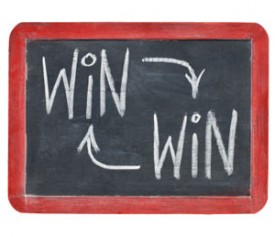 It happens. Sometimes I create something so beautiful and captivating, and although I’m sure that everyone who lays eyes on it will love it instantaneously, the one person (or small group of people who make up a review committee) who is supposed to sing its praises and tell me it’s my best work ever — that’s the one who doesn’t like it. It employs the wrong style, uses the wrong color scheme, evokes the wrong feeling, or [insert a number of other reasons why it’s just not what they were looking for].
It happens. Sometimes I create something so beautiful and captivating, and although I’m sure that everyone who lays eyes on it will love it instantaneously, the one person (or small group of people who make up a review committee) who is supposed to sing its praises and tell me it’s my best work ever — that’s the one who doesn’t like it. It employs the wrong style, uses the wrong color scheme, evokes the wrong feeling, or [insert a number of other reasons why it’s just not what they were looking for].
What does a designer do in this scenario? On one hand, my client is paying me to create something for them, whether it’s a postcard, a flyer or an entire website. They should certainly get a final product that they are happy with, right? Of course, right.
But aren’t they also paying me for my expertise, my creative eye, and my professional opinion? If I say the logo is too big in the dimensions they’re requesting, the stock image they chose is so clip-arty it looks like it belongs on a second-grader’s birthday invitation, or the font they are suggesting is illegible, doesn’t my assessment matter? I’m the designer, aren’t I?
I have struggled with this dilemma a few times in my career as a freelancer, and when the client-designer-disagreement monster rears its ugly head, I try to step back and look at the situation from an outside perspective (as much as I can do so from the inside, that is).
- Is the aspect of my design that’s in question just a matter of personal taste? Blue versus green? Serif font versus sans serif? In that case, the client is certainly entitled to an opinion different from my own and I am happy to make some alterations to find a solution we can both live with and love. I’m all about service, after all!
- Are there large changes I can make to improve the overall design in a general way, which might make the client view it differently? Sometimes when the client feels the design is off, it can be as simple as changing the font, enlarging the headline to stand-out, in-your-face big letters, or changing the background color from light to dark and reversing out the text color. In this scenario, they’re not really shooting down the entire design; they just need to see the pieces in a new light.
- Is the client communicating her opinion accurately? Perhaps she is saying she doesn’t like the photo I used, but maybe she’d like it used in a different way; as a watermark, in black and white, or Photoshopped to look a little retro. If the client doesn’t seem to like what I consider the best element of the design, I can present it another way. If she still hates it, she probably just hates it, and I move on.
- Am I understanding the client’s desired style? Am I designing a luau invitation with a corporate feel? Am I under the impression the audience for the website will be middle-schoolers when it’s really senior citizens? If I’ve done my job right, this will never be the case because I always do a little pre-project meeting or email planning to iron out these details. But if there is something I’ve missed, this could for sure be the disconnect.
Once I can pinpoint what it is that is not floating the client’s boat, it’s much easier to make adjustments to the piece. My goal is always to turn in a project that not only the client is thrilled about, but also one that I’m proud to put my name on. And that is what I call a win-win.
